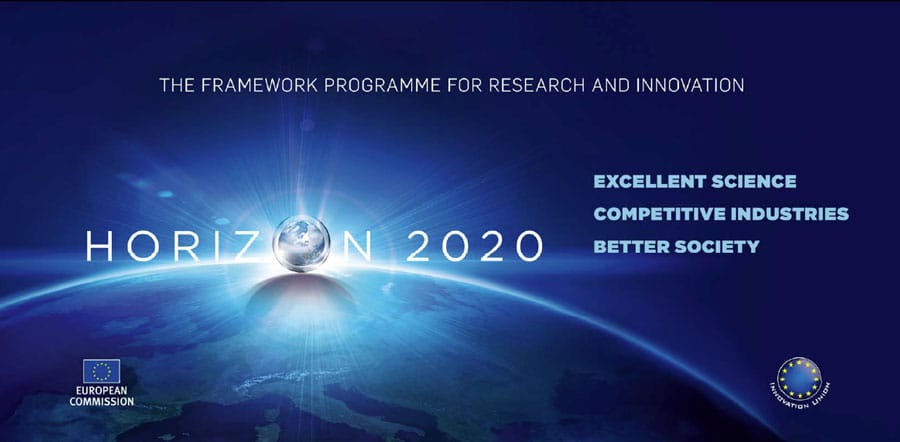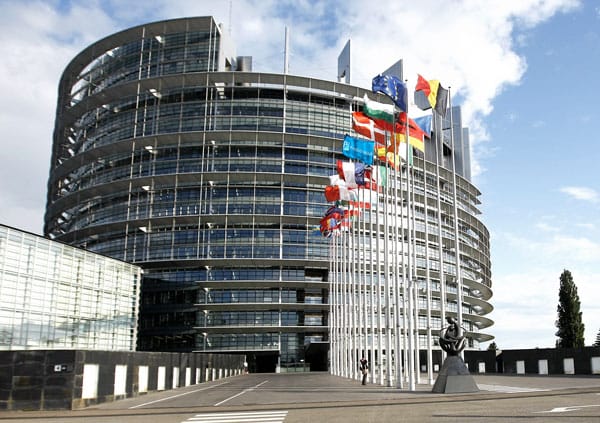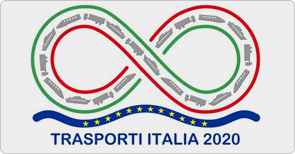

Let’s start with a question: why does Europe finance Innovation and Research? Funding for research, at both national and international level, seeks to provide guidance and support to enable business, universities and research centres to develop better solutions for the needs and difficulties of the Community.
In other words, it is a political and financial tool that steers research, including industrial research, towards socially useful fields by providing industry and public/private research with financial support. Funding covers all fields of research activity conducted in Europe, from Agriculture to the Social Sciences and Nanotechnology.
The Piaggio Group, of course, is concerned with the sector that represents its core business, mobility, and individual mobility in particular. This is a huge area, embracing the technical side of traditional and innovative engines, new technologies and materials, the development of new vehicle concepts, safety, electronics, development of new ways to use vehicles, and much else besides. All these issues also have a prominent place in Community policies.
Over the last few years, the Commission has placed particular importance on Sustainable Mobility, due to growing awareness of the need to reduce CO2 emissions (by 20% by 2020 with respect to 1990). Consequently, significant effort has also been put into research into electric vehicles, batteries, and development of a recharging infrastructure. These are fundamental questions for the future, but at the moment their industrial returns are low, and so they need financial political support. The same is true of the increase in road user safety, in terms of education, infrastructure, vehicles, intelligent transport systems, etc.
PIAGGIO’S COMMITMENT TO CUTTING-EDGE PROJECTS
For many years, Piaggio has used the funding instruments made available by national and European bodies to support its most innovative R&D work. Participation in funded projects provides support for the two main R&D areas in Piaggio, development of new mobility solutions, through improved vehicle functionality and safety, and reduction of environmental impact and consumption, thanks to increasingly eco-sustainable, high-performance engines.
Participation in these schemes provides Piaggio with many advantages, such as the opportunity to work in consortia with a wide variety of national and international players (business organisations, research centres, universities), to fuel knowledge, to facilitate the technological transfer of scientific research results, and to boost its own competitiveness and international reach.

In recent years, the Piaggio Group has been involved in a number of projects: the APROSYS project for studies on passive motorcycle safety (simulations and crash tests); the WATCH-OVER and SAFESPOT projects for the development of cooperative vehicle-to-vehicle communication systems; SAFERIDER (7° FP), for development of on-board information systems (navigation, remote diagnosis, emergency call, etc. ) and rider support systems (collision alerts, dangerous bend, etc.); the 2BESAFE project on motorcycle riding behaviour and car/two-wheeler interaction; ESUM for the promotion of virtuous practices in urban mobility (e.g., safe vehicles); the VERITAS project for the development of new ergonomic design systems that cater for the needs of the elderly and disabled.
Piaggio was the leader on the SIM project (Safety in Motion), funded under the European Commission’s 6th Framework Programme and completed in 2009, for the development and testing of active, preventive and passive safety systems. The outcome was a working three-wheel prototype (MP3), equipped with an advanced braking system (three-channel ABS), semi-active suspensions and a combined passive safety system (frontal airbag and inflatable jacket) and innovative man-machine interface. The results of the SIM project provided input for many innovations subsequently put into mass production.
The projects listed above brought the Group resources totalling more than € 1,580,000 and enabled cooperation with leading international companies and constructors, and with:
FROM 2014 TO 2020: THE HORIZON 2020 PROGRAMME
As the EU website says, Horizon 2020 is the financial instrument implementing the Innovation Union, a flagship initiative aimed at securing Europe’s global competitiveness.

Seen as a means to drive economic growth and create jobs, Horizon 2020 has the political backing of Europe’s leaders and the Members of the European Parliament. They agreed that research is an investment in our future and so put it at the heart of the EU’s blueprint for smart, sustainable and inclusive growth and jobs. By coupling research and innovation, Horizon 2020 emphasises excellent science, industrial leadership and tackling societal challenges. The goal is to ensure Europe produces world-class science, removes barriers to innovation and makes it easier for the public and private sectors to work together in delivering innovation. The Horizon 2020 programme will provide funding for the transport sector as a whole, from ships to aircraft, to minimise the impact of transport systems on climate and the environment through the development of smart equipment, infrastructure and services, and the improvement of urban transport and mobility. Horizon 2020 aims to make the mobility of people and goods safer with a significant reduction in traffic congestion, through development of new freight transportation and logistics concepts to reduce accident, death and injury rates and improve safety. Horizon 2020 supports global leadership for the European transport industry by strengthening competitiveness and the performance of the European transport manufacturing industry and related services.
THE RULES OF THE GAME
To receive European funding, project should be presented in response to a specific call for proposals. The project specifies purpose, timing, costs, partners, expected results. An international consortium has to be formed with high-level competences, to guarantee that the expected results are achieved. Applications are assessed by the European Commission and a score table is drawn up.

The European Parliament
If the project is approved, it must be completed in the time and with the budget set out in the proposal. The European Commission conducts regular inspections to check technical stage of completion (under the responsibility of the Production/Innovation Development & Strategy Division), as well as economic progress (under the responsibility of Subsidised Funding). These checks generate disbursement of intermediate payments through to completion of the project and payment of the final contribution.
Operating from 2014 to 2020, Horizon 2020 continues the legacy of all the previous European Framework Programmes, as a single tool: with a budget of approximately 80 billion Euro for seven years, it is subdivided into three main sections: excellent science, industrial leadership and societal challenges.
PIAGGIO AND HORIZON 2020
The contents of the Horizon 2020 program were drawn up with the active contribution of the European technology platforms, bodies promoted and coordinated by the European Commission. The platforms are composed of public and private players who together set out the priorities for research, development and innovation themes and recommend medium/long-term development paths.
The Piaggio Innovation division, together with Institutional Affairs, provided active support for the ACEM (Association des Constructeurs Européens de Motocycles) and was directly involved in the work panels concerned with the Group’s core business: traditional engines, road safety, urban mobility. The panels are promoted by the European Road Transport Research Advisory Council (ERTRAC), the EC reference technology platform for the Transport sector.
The Piaggio Group has joined the new European Green Vehicles Initiative Association (EGVIA), as a key interlocutor for recommendations with regard to electric two-wheelers. Research and innovation themes for light vehicles have been included in a specific call for proposals in the “Green Vehicles” area for category L electric vehicles, with a budget of 5 to 8 million Euro, with a free grant up to 100%.
Piaggio was involved in the drafting of the “Smart, green and integrated transport” programme, with particular attention to issues such as electric vehicles for the future, development of new low-emission powertrains, innovative vehicle architectures and development of safety solutions for vulnerable road users. Compatibly with the corporate research strategy, these will be the main areas of Piaggio research work in the coming years.
In recent years, Piaggio has also worked on a number of important projects with national funding. The MUSS project for safe, sustainable urban mobility, was presented under the “Industria 2015” (Industry 2015) call for proposals of the Ministry for Economic Growth, for the development of innovative technologies for eco-compatibility and sustainable urban transport .

The project, led by Piaggio, involved many industrial partners and research centres, and produced significant results in the study and development of new engines with lower consumption and emissions, engines using alternative fuels, vehicle improvements through study of dynamics, reduction of weight and friction, Life Cycle Management, study and introduction of active and passive safety systems (advanced braking systems, traction control and stability, crash simulation and tests …), study of man-machine interface systems and on-board information systems, increased comfort (thermal, acoustic and meteorological) and ergonomics, study of new layouts for electric and hybrid vehicles, study and development of new safe tilting vehicles.
At national level, too, the latest ministerial initiatives reflect the intention of encouraging active participation among players and convergence with the objectives of the Horizon 2020 programme. In 2012, the Italian Education Ministry promoted the creation of National Technological Clusters bringing together bodies of various kinds to focus on specific technological areas, in order to boost competitiveness and domestic economic growth.

Piaggio took part in the “Trasporti Italia 2020” cluster, contributing to the formulation of a strategic plan for the development of innovative, eco-sustainable means of transport for road mobility. Simultaneously, the Italy 2020 project proposal for the development of new smart, green and interconnected vehicle solutions was presented and later approved for funding.
Piaggio, in other words, plays an active role in using public funding to support and improve its research over the coming years, cultivate ties with institutions and the community for consensus on research goals of public interest, and develop excellent innovations for more sustainable, safer mobility.